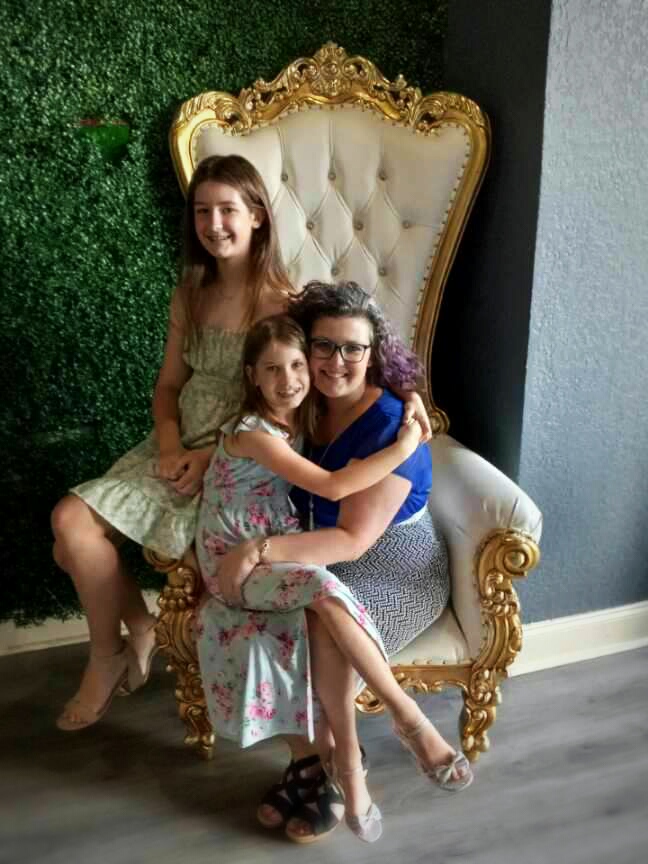So we last discussed that the first step before creating a behavior plan was to assess your child's behavior and take some data. Behavior typically has 1 of 4 functions: attention, tangibles, escape, and sensory. This week I'm going to create 3 sample behavior plans for a tantrum - one with the function of attention, one with the function of access to tangibles, and one with the function of escape from non-prefered activities. These are very simplistic plans using only reinforcement and extinction.
ATTENTION
Antecedent: Mommy is cooking dinner in the kitchen.
Behavior: Child comes into the kitchen and begins tugging on mommy's leg. When mommy doesn't attend the child begins crying then falls to the floor kicking.
Consequence: Mommy stops cooking dinner and picks the child up saying "stop crying".
Result: The child stops crying.
Function: The child's tantrum successfully gained mommy's attention - both in the form of acknowledging the behavior "stop crying" and in the form of mommy stopping her current activity to pick up the child.
Plan of action: First, decide on a replacement behavior. For instance, the child wanted to be picked up so you may teach the word "up". Try to do this during play time when the child is happy and not engaging in tantrum behaviors. Tell the child to say "up" and immediately pick the child up to reinforce that behavior. Practice this several times. For young toddlers, their closest approximation may be "uh". Next, when the child engages in tantrum behavior to gain your attention you should apply extinction - meaning that if the child wants attention then you do not provide any attention and do not pick the child up. When the child becomes calm, prompt the child to say "up" and immediately reinforce this behavior.
TANGIBLE
Antecedent: Sister is playing with a toy that brother wants to play with.
Behavior: Brother tries to take the toy away, unsuccessfully. Then the brother begins to cry and hit his sister.
Consequence: The sister gives the toy to her brother.
Result: Brother's tantrum stops and he begins to play with the toy.
Function: The child's tantrum successfully gained access to the toy (tangible).
Plan of action: First, decide on a replacement behavior. For instance, the child wanted the toy from his sister so you may teach the child to ask his sister to "share" or to say "please". Again, try to do this when the child is engaging in appropriate behaviors and having fun, not when the child is in the middle of a tantrum. Prompt the child to say the key word then immediately reinforce that behavior. It helps if the other child is willing to do this but if not then mommy or daddy can share the toy. Next, when the child engages in the snatching away and tantrum behavior to get access to a toy apply extinction - meaning DO NOT allow the child to have the toy. When the child becomes calm, prompt the child to say the key words - "share" or "please" - and immediately reinforce the behavior. Thank the child for asking nicely and have the other child share the toy.
ESCAPE
Antecedent: Daddy says "time to do homework".
Behavior: The child immediately says "No" and begins throwing toys, crying, and kicking.
Consequence: Daddy says that we can do homework later.
Result: The child's tantrum stops and he continues to play with his toys.
Function: The child's tantrum behavior successfully earned escape from the homework activity plus the child continued to engage in the preferred play activity.
Plan of action: First, teach the child a replacement behavior. For instance, the child did not want to do homework and wanted to continue playing so you may teach the child to ask for "5 more minutes, please". This may not be acceptable in all situations but it is important that the child learns that sometimes you can delay non-preferred tasks. It also leads us to preparing the child before transition. It often helps to tell a child "In 5 more minutes, we're going to do homework", then "One more minute", and finally a 10 second countdown before putting away the toys and doing homework. When the child engages in the tantrum behavior when told "time to do homework" you should apply extinction - meaning do not let the child escape doing his homework. Hold the demand and put away the toys. Inevitably the child will continue to tantrum and it will be impossible to do the homework under this circumstance. This is why it is important to clean up the toys so that while the child is temporarily escaping homework, he does not have access to fun activities. When the child becomes calm, prompt the child through the homework activity reminding them that when it is done he may go play. "First homework, then play."
Keep voting for the next topic: tantrums, diets, or eat your veggies!
Applied Behavior Analysis (ABA) is most notably used in the treatment of children with Autism Spectrum Disorders. But in truth, ALL children experience problem behaviors at some point in their lives - from the “terrible twos” to the rebellious teen years. This blog is designed to provide an overview of ABA and how it can be a useful tool for typically developing children, teenagers, and even your husband;)
Subscribe to:
Post Comments (Atom)

0 comments:
Post a Comment